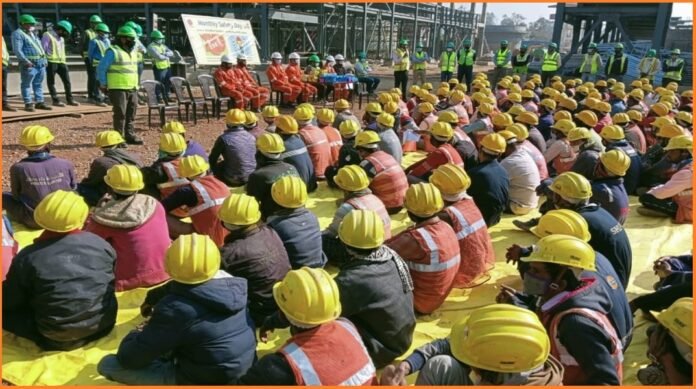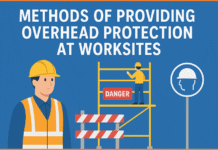In today’s competitive business environment, superior performing companies understand that safety performance accountability is not just a compliance obligation but a strategic imperative. Safety performance serves as a critical metric that reflects organizational health, operational efficiency, and the overall well-being of the workforce. By integrating safety performance into the broader performance measurement system, these companies are able to foster a culture of continuous improvement and resilience.
Safety performance accountability involves ensuring that every member of the organization, particularly line management, is responsible for safety outcomes. This accountability structure is crucial as it delineates clear roles and responsibilities, allowing for a systematic approach to identifying, mitigating, and managing risks. When line management at every level is held accountable for safety performance, it encourages proactive behaviors, effective communication, and robust risk management practices.
Incorporating safety performance into the overall performance metrics enables companies to align safety goals with business objectives. This alignment ensures that safety is not viewed in isolation but as an integral part of the company’s success. Superior performing companies often leverage key performance indicators (KPIs) related to safety to drive decision-making processes, resource allocation, and operational strategies. These KPIs provide valuable insights into areas of improvement and highlight best practices that can be replicated across the organization.
Moreover, a well-defined accountability framework for safety performance can significantly enhance employee engagement and morale. When employees perceive that their safety is a priority and that there are clear mechanisms for accountability, it fosters a sense of trust and commitment. This, in turn, can lead to increased productivity, reduced absenteeism, and lower incident rates, ultimately contributing to the company’s bottom line.
In essence, establishing accountability for safety performance is a fundamental aspect of creating a safe and thriving workplace. It requires a top-down approach where leadership sets the tone and expectations, and every level of management is vigilant in upholding safety standards. By embedding safety performance accountability into the organizational fabric, superior performing companies not only safeguard their employees but also enhance their overall operational excellence.
Contents
Incorporating Safety Performance into the Performance Review System
Integrating safety performance into a company’s performance review system is a multifaceted approach aimed at fostering a culture of safety and accountability. Firstly, companies establish clear, measurable safety metrics that are aligned with organizational goals. These metrics may include accident rates, compliance with safety procedures, and proactive safety measures taken by employees. Such metrics are incorporated into individual and team performance evaluations, ensuring that safety becomes an integral part of the overall performance assessment.
The evaluation process typically involves scoring safety performance on a predefined scale. Managers and supervisors are trained to assess safety behaviors and outcomes objectively, utilizing tools such as safety observation reports, incident records, and employee feedback. This structured approach ensures consistency and fairness in evaluating safety performance across the organization.
Furthermore, the influence of these safety performance scores on compensation and career progression is significant. Companies often link safety performance directly to financial incentives such as salaries and bonuses. Employees who consistently demonstrate high safety standards may receive higher performance ratings, resulting in salary increments and bonus payouts. Conversely, poor safety performance can lead to lower ratings, affecting financial rewards and career advancement opportunities.
Promotion potential is another critical aspect influenced by safety performance. Demonstrating a strong commitment to safety can enhance an employee’s prospects for advancement within the organization. Management positions, in particular, often require a proven track record of maintaining a safe work environment. Thus, employees aspiring for leadership roles are motivated to prioritize and excel in safety-related practices.
Overall, incorporating safety performance into the performance review system underscores the importance of safety in the workplace. It not only promotes a safer work environment but also aligns individual and organizational objectives, fostering a culture where safety is a shared responsibility. This strategic integration ultimately drives superior safety performance, benefiting both the company and its employees.
Indicators of Management Commitment to Safety
Management’s commitment to safety is a critical indicator of a company’s dedication to maintaining a secure and healthy work environment. One of the principal measures of this commitment is the integration of safety performance metrics within the overall performance review system. By embedding safety criteria into performance evaluations, companies can ensure that all levels of the organization are held accountable for their safety practices, thereby fostering a culture where safety is prioritized.
For instance, leading companies often include specific safety-related goals and achievements as part of their key performance indicators (KPIs). These may encompass metrics such as the number of workplace incidents, adherence to safety protocols, and the completion of safety training programs. By doing so, management sends a clear message that safety is not just a regulatory requirement but a core value of the organization.
Case studies from superior performing companies illustrate the effectiveness of this approach. Consider the example of a manufacturing firm that experienced a significant reduction in workplace accidents after revamping its performance review system to include safety metrics. By aligning employee incentives with safety outcomes, the company not only improved its safety record but also enhanced overall operational efficiency. Employees became more vigilant and proactive in identifying potential hazards, leading to a safer work environment.
Similarly, a multinational construction company implemented a safety performance review system that required managers to report on safety practices and incident rates regularly. This transparency and accountability at the managerial level trickled down to all employees, resulting in a substantial decrease in on-site accidents and an increase in compliance with safety standards.
These examples underscore the importance of management’s commitment to safety as a determinant of a company’s safety performance. When safety metrics are an integral part of performance reviews, they drive continuous improvement and underscore the organization’s dedication to protecting its workforce. This proactive approach not only mitigates risks but also contributes to the overall success and sustainability of the company.
Consequences of Excluding Safety Performance in Accountability Systems
Excluding safety performance from accountability systems can lead to a myriad of negative implications for companies. When safety metrics are not integrated into the performance evaluation framework, it can foster an environment where safety is not prioritized. This often results in management lacking a genuine commitment to maintaining safe working conditions. The absence of financial or promotional incentives tied to safety performance means that leadership might overlook the importance of robust safety protocols, ultimately endangering employees and the organization.
A significant risk associated with this oversight is the increase in workplace accidents and injuries. Without stringent safety measures, the likelihood of incidents rises, leading to higher compensation claims and potential legal repercussions. The Swartz (2000) study highlights that companies that neglect to include safety performance in their accountability systems often face increased operational disruptions and financial losses. The study underscores that integrating safety measures into evaluation systems not only improves safety outcomes but also enhances overall operational efficiency.
Moreover, excluding safety performance can damage a company’s reputation. In today’s market, stakeholders, including investors and customers, are increasingly concerned about corporate responsibility and ethical practices. Companies that fail to demonstrate a commitment to safety may find it challenging to attract and retain top talent and could face backlash from the public and media. This reputational damage can have long-term adverse effects on business growth and sustainability.
Furthermore, the psychological impact on employees in an unsafe working environment cannot be overlooked. Employees who perceive that their well-being is not valued may experience decreased morale and productivity, leading to higher turnover rates and associated recruitment and training costs. By contrast, companies that embed safety performance into their accountability systems foster a culture of trust and reliability, which can significantly enhance employee engagement and retention.
In conclusion, integrating safety performance into accountability systems is crucial for mitigating risks, enhancing operational efficiency, maintaining a positive reputation, and fostering a safe and productive workplace culture. The evidence is clear: companies that prioritize safety through comprehensive accountability measures are better positioned to achieve superior performance and long-term success.





